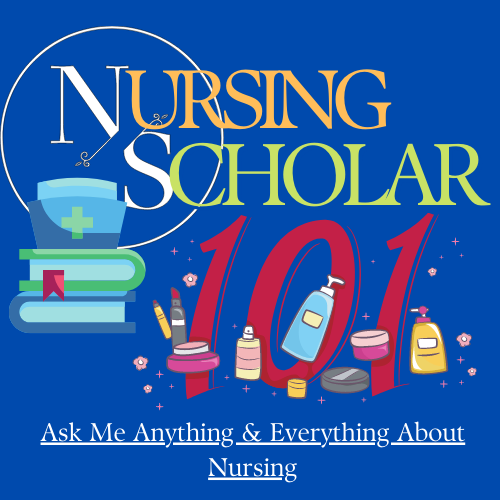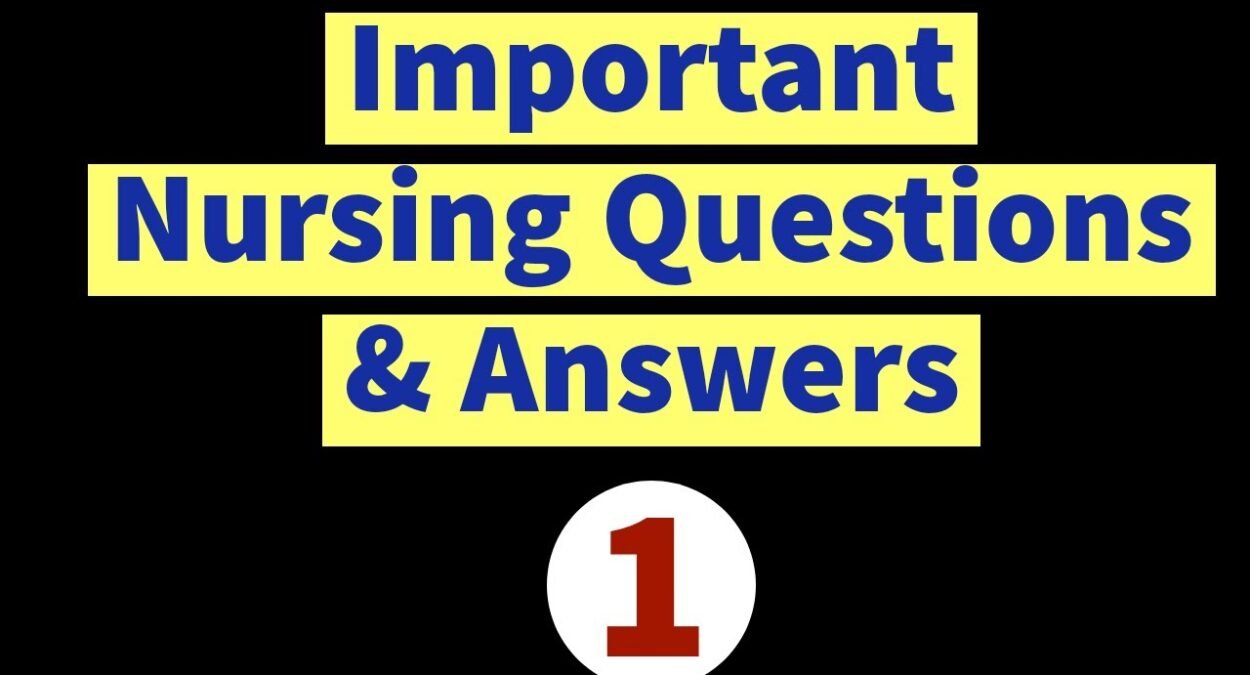Demystifying Medical Short Forms: 20 FAQs Answered for Healthcare Professionals and Patients | FREQUENTLY ASKED QUESTIONS
Demystifying Medical Short Forms: 20 FAQs Answered for Healthcare Professionals and Patients. In the fast-paced world of healthcare, medical professionals often rely on short forms and abbreviations to streamline communication and documentation.
These shorthand terms can save valuable time and space but may also lead to confusion for those not familiar with the specific jargon used in the medical field. In this article, we address five frequently asked questions about the short forms employed by medical professionals, shedding light on their purpose, common usage, and the importance of understanding them for effective healthcare delivery.
FREQUENTLY ASKED QUESTIONS
1. Are short forms used internationally or do they vary by region?
Short forms used by medical doctors and nurses can vary to some extent by region or country. While there are many commonly recognized abbreviations and acronyms that are used internationally, there may also be regional or institutional variations.
It is important for healthcare professionals to be aware of these variations when communicating with colleagues from different regions or when reviewing medical literature from various sources. Standardized abbreviations and acronyms, such as those recommended by professional organizations or regulatory bodies, help ensure consistency and understanding in medical communication across borders.
2. How can healthcare professionals ensure that short forms are understood by all members of the healthcare team?
To ensure that short forms are understood by all members of the healthcare team, healthcare professionals can take the following measures:
1. Use standardized abbreviations:
Stick to commonly accepted abbreviations and acronyms that are widely understood in the medical field. It is important to follow established guidelines and recommendations from professional organizations or regulatory bodies.
2. Provide context:
When using a short form, provide context or clarification if needed. This can be done by spelling out the full term at least once before using the abbreviation or by providing a brief explanation of the abbreviation in the relevant context.
3. Document abbreviations in patient records:
Clearly document abbreviations used in patient records, ensuring that they are consistently used and understood by all members of the healthcare team. This promotes clarity and minimizes the risk of misinterpretation.
4. Effective communication:
Communication plays a crucial role in ensuring understanding. Healthcare professionals should communicate clearly and actively listen to their colleagues, using plain language whenever possible. If there is any confusion or uncertainty, it is important to seek clarification to avoid misunderstandings.
5. Ongoing education and training:
Regular education and training sessions can help healthcare professionals stay updated on commonly used abbreviations and acronyms. Continuing education programs, workshops, and resources provided by professional organizations can enhance awareness and understanding.
6. Encourage open dialogue:
Promote an environment where healthcare professionals feel comfortable asking questions and seeking clarification. Encourage open dialogue and discussion to address any potential confusion or gaps in understanding.
By implementing these strategies, healthcare professionals can ensure that short forms are effectively understood and used within the healthcare team, promoting clear communication and enhancing patient safety.
3. Are there any instances where the use of short forms is discouraged?
While short forms and abbreviations can be helpful in medical communication, there are certain instances where their use is discouraged or should be approached with caution. Some of these instances include:
1. Patient communication:
When communicating with patients, it is generally recommended to avoid using abbreviations and acronyms that may be unfamiliar to them. Instead, healthcare professionals should use plain language and ensure that patients fully understand the information being conveyed.
2. High-stakes situations:
In critical or high-stakes situations where precision and clarity are of utmost importance, it is advisable to avoid using abbreviations that may introduce ambiguity or confusion. Clear and explicit communication is crucial to minimize the risk of errors or misinterpretations.
3. Error-prone abbreviations:
There are specific abbreviations, known as “error-prone abbreviations,” that have been associated with medication errors and adverse events. These abbreviations include ambiguous terms or look-alike/sound-alike abbreviations. Healthcare professionals should be aware of these error-prone abbreviations and use caution when encountering them.
4. Legal and regulatory considerations:
Some legal and regulatory bodies have guidelines or restrictions regarding the use of certain abbreviations or acronyms. Healthcare professionals should be familiar with any applicable regulations or guidelines in their jurisdiction and adhere to them.
5. Cross-cultural communication:
When communicating with colleagues or patients from diverse cultural backgrounds, it is important to be mindful of language barriers and potential differences in understanding abbreviations. Taking cultural context into account and ensuring clarity in communication is crucial in such situations.
In general, the use of short forms should be approached with caution, especially in situations where there is a potential for miscommunication or misunderstanding. Clear and effective communication should always take precedence, and healthcare professionals should use their judgment to determine when it is appropriate to use or avoid abbreviations based on the specific circumstances and audience involved.
FREQUENTLY ASKED QUESTIONS
4. What resources are available to healthcare professionals for learning and understanding medical abbreviations?
Healthcare professionals have access to a variety of resources to learn and understand medical abbreviations. Some of these resources include:
1. Medical dictionaries and glossaries:
Medical dictionaries and glossaries provide definitions and explanations of medical terms, including abbreviations and acronyms. These resources are often available in print or online formats and can be valuable references for healthcare professionals.
2. Professional organization guidelines:
Many professional organizations, such as medical associations and regulatory bodies, publish guidelines or recommendations for the use of abbreviations in healthcare. These guidelines often include lists of approved abbreviations and guidance on their appropriate usage.
3. Medical textbooks and reference books:
Medical textbooks and reference books specific to different medical specialties often include sections or chapters dedicated to medical abbreviations. These resources can be useful for healthcare professionals seeking comprehensive information on abbreviations in their specific field.
4. Online databases and websites:
There are several online databases and websites that provide comprehensive lists of medical abbreviations and their meanings. Examples include Medscape, Merriam-Webster Medical Dictionary, and the National Library of Medicine’s Medical Subject Headings (MeSH) database.
5. Continuing education courses:
Healthcare professionals can participate in continuing education courses or workshops that specifically focus on medical abbreviations. These courses may be offered by professional organizations, educational institutions, or healthcare training providers.
6. Hospital or institutional resources:
Many healthcare institutions have internal resources, such as manuals, style guides, or databases, that provide guidelines and approved abbreviations for use within the organization. These resources may be developed to ensure consistency and accuracy in documentation and communication.
It is important for healthcare professionals to regularly update their knowledge and stay informed about changes or updates in medical abbreviations. By utilizing these resources, healthcare professionals can enhance their understanding and usage of medical abbreviations, promoting clear and effective communication in their practice.
5. How can patients ensure they understand the short forms used in their medical records?
Patients play an active role in their healthcare journey and can take steps to ensure they understand the short forms used in their medical records. Here are some strategies for patients to enhance their understanding:
1. Ask for clarification:
If patients come across unfamiliar abbreviations or acronyms in their medical records, they should not hesitate to ask their healthcare provider or the healthcare team for clarification. Requesting an explanation of the specific terms used can help patients gain a better understanding of their medical information.
2. Request a patient-friendly explanation:
Patients can ask their healthcare provider to provide explanations in plain language, avoiding excessive use of abbreviations or technical jargon. This ensures that the information is easily comprehensible and allows patients to actively participate in their own care.
3. Utilize educational resources:
Patients can explore educational resources provided by reputable healthcare organizations or trusted websites. These resources often include glossaries or guides that explain common medical abbreviations, helping patients become more familiar with the terminology used in their medical records.
4. Keep a personal health record:
Maintaining a personal health record can help patients track their medical information and understand the abbreviations used. Patients can create their own list of abbreviations and acronyms they encounter, and research their meanings using reliable sources or seek clarification from their healthcare provider during appointments.
5. Engage in open communication:
Patients should openly communicate with their healthcare provider and express their desire to understand their medical records fully. By fostering a collaborative and communicative relationship, patients can ensure that their concerns are addressed, and their questions are answered effectively.
6. Seek a second opinion, if needed:
If patients feel overwhelmed or have concerns about the information presented in their medical records, they can consider seeking a second opinion from another healthcare professional. This can provide an opportunity for further clarification and a fresh perspective on their healthcare information.
By actively engaging in their healthcare and seeking clarification when needed, patients can ensure they have a comprehensive understanding of the short forms used in their medical records. This empowers them to make informed decisions and actively participate in their own healthcare journey.
6. What are short forms and why do medical professionals use them?
Short forms are abbreviated versions of medical terms, acronyms, or symbols used by healthcare providers. They serve as efficient communication tools, allowing medical professionals to convey information quickly and accurately. With the immense amount of medical knowledge and documentation involved, short forms aid in streamlining communication and reducing errors in time-sensitive situations.
7. What are some commonly used short forms in medical practice?
Medical professionals use a wide range of short forms in their day-to-day practice. Common examples include abbreviations for medical conditions (e.g., HTN for hypertension), medications (e.g., NSAIDs for nonsteroidal anti-inflammatory drugs), diagnostic tests (e.g., ECG for electrocardiogram), and medical procedures (e.g., CPR for cardiopulmonary resuscitation). Understanding these short forms is essential for effective communication within the healthcare team.
8. How can patients ensure they understand the short forms in their medical records?
Patients can actively participate in their healthcare by seeking clarification from their healthcare provider. Patients should feel empowered to ask questions about any unfamiliar short forms in their medical records. Requesting plain language explanations, using patient-friendly resources, and maintaining a personal health record can help patients better understand and navigate their medical information.
9. Are short forms standardized across all healthcare settings?
While there are many widely recognized short forms used in medical practice, it is important to note that some abbreviations may vary across different healthcare settings, regions, or even individual healthcare providers. To ensure effective communication, healthcare professionals should adhere to standardized abbreviations recommended by professional organizations and regulatory bodies.
10. What precautions should be taken when using short forms in medical communication?
While short forms can enhance efficiency, they can also introduce the potential for miscommunication and errors. It is crucial for medical professionals to use short forms judiciously, avoiding ambiguous abbreviations or acronyms that may lead to confusion. Clear documentation, context-driven usage, and effective communication within the healthcare team are key to mitigating risks associated with short form usage.
11. Why are short forms used in medical practice?
Short forms are used in medical practice to streamline communication, save time, and improve efficiency. In the fast-paced healthcare environment, where quick and accurate information exchange is crucial, short forms allow medical professionals to convey complex concepts and medical terms in a concise manner.
12. Are there any risks associated with the use of short forms?
While short forms offer many benefits, there are potential risks involved. Ambiguous or similar-looking abbreviations can lead to confusion and medication errors. Therefore, it is essential for medical professionals to use standardized abbreviations, adhere to local guidelines, and prioritize patient safety by ensuring clear and accurate communication.
13. How can healthcare professionals stay updated with the latest short forms?
Healthcare professionals can stay updated with the latest short forms by regularly engaging in continuing education, attending conferences or workshops, and accessing reputable medical resources. Professional organizations and medical journals often publish updates on approved abbreviations and guidelines for their usage.
14. Is it important for patients to be familiar with short forms used in healthcare?
While patients may not be expected to know all medical abbreviations, having a basic understanding of commonly used short forms can empower them to be more involved in their healthcare. It allows patients to better understand their medical records, ask informed questions, and actively participate in discussions regarding their treatment plans.
15. How can healthcare professionals promote effective communication while using short forms?
Healthcare professionals can promote effective communication by using short forms sparingly, providing clear context, and ensuring that patients understand the abbreviations used. They should actively encourage questions from patients, engage in open dialogue, and prioritize patient-centered care to avoid misunderstandings or confusion.
16. Are short forms exclusive to medical professionals, or are they also used by other healthcare staff?
Short forms are commonly used by medical professionals, including doctors, nurses, and specialists. However, other healthcare staff members, such as medical transcriptionists, pharmacists, and medical coders, also encounter and utilize short forms as part of their roles in healthcare documentation and administration.
17. How can healthcare institutions promote consistent and accurate use of short forms?
Healthcare institutions can promote consistent and accurate use of short forms by establishing standardized policies and guidelines. This can include creating internal databases or resources that provide approved abbreviations, conducting regular training sessions, and encouraging open communication among healthcare professionals to address any concerns or questions related to abbreviations.
18. Can short forms vary between different medical specialties?
Yes, short forms can vary between different medical specialties. Certain abbreviations may be more commonly used in specific fields, reflecting the terminology and practices unique to those specialties. Medical professionals should be aware of specialty-specific abbreviations and ensure proper understanding when communicating across different medical disciplines.
19. How can the potential for misinterpretation of short forms be minimized?
To minimize the potential for misinterpretation, healthcare professionals should prioritize clarity and accuracy when using short forms. They should provide context, avoid using ambiguous abbreviations, and double-check for potential confusion. Effective documentation practices, thorough patient handovers, and clear verbal communication can significantly reduce the risk of misinterpretation.
20. Can short forms change over time?
Yes, short forms can change over time as medical practices evolve, new terms emerge, and guidelines are updated. It is important for healthcare professionals to stay updated with the latest developments, follow recommended practices, and adapt to any changes in short form usage to maintain effective communication within the medical field.
Conclusion:
Short forms are an integral part of medical communication, enabling healthcare professionals to convey information quickly and accurately.
Understanding the common short forms used in medical practice is essential for effective collaboration among healthcare providers and for patients to comprehend their medical records. By actively engaging in open communication, seeking clarification, and promoting standardized practices, both medical professionals and patients can ensure clear and accurate healthcare communication.
Short forms play a significant role in medical communication, enabling efficient and concise exchange of information among healthcare professionals. While their usage offers benefits in terms of time-saving and improved efficiency in healthcare settings, it is important to be mindful of the potential risks and challenges associated with their use.
Medical professionals should prioritize patient safety by using standardized abbreviations, staying updated with the latest short forms, and promoting clear and accurate communication.
Patients can also benefit from having a basic understanding of commonly used short forms, as it empowers them to actively participate in their healthcare journey. Open communication, clear explanations from healthcare providers, and seeking clarification when needed can help patients navigate their medical records and make informed decisions about their care.
To promote effective communication, healthcare institutions can establish policies and guidelines for the consistent and accurate use of short forms. Ongoing education and training programs can keep healthcare professionals updated and ensure that they adhere to the best practices when using abbreviations.
While short forms may vary across medical specialties, maintaining clarity and avoiding ambiguity should be a priority to minimize the risk of misinterpretation. Through continuous efforts to improve communication, healthcare professionals can enhance patient safety, improve care coordination, and foster a collaborative healthcare environment.
In conclusion, short forms are an integral part of medical practice, but their usage requires attention to accuracy, standardization, and patient safety. By understanding the commonly used abbreviations, promoting effective communication, and staying updated with best practices, medical professionals and patients can navigate the complex world of medical abbreviations with clarity and confidence.





